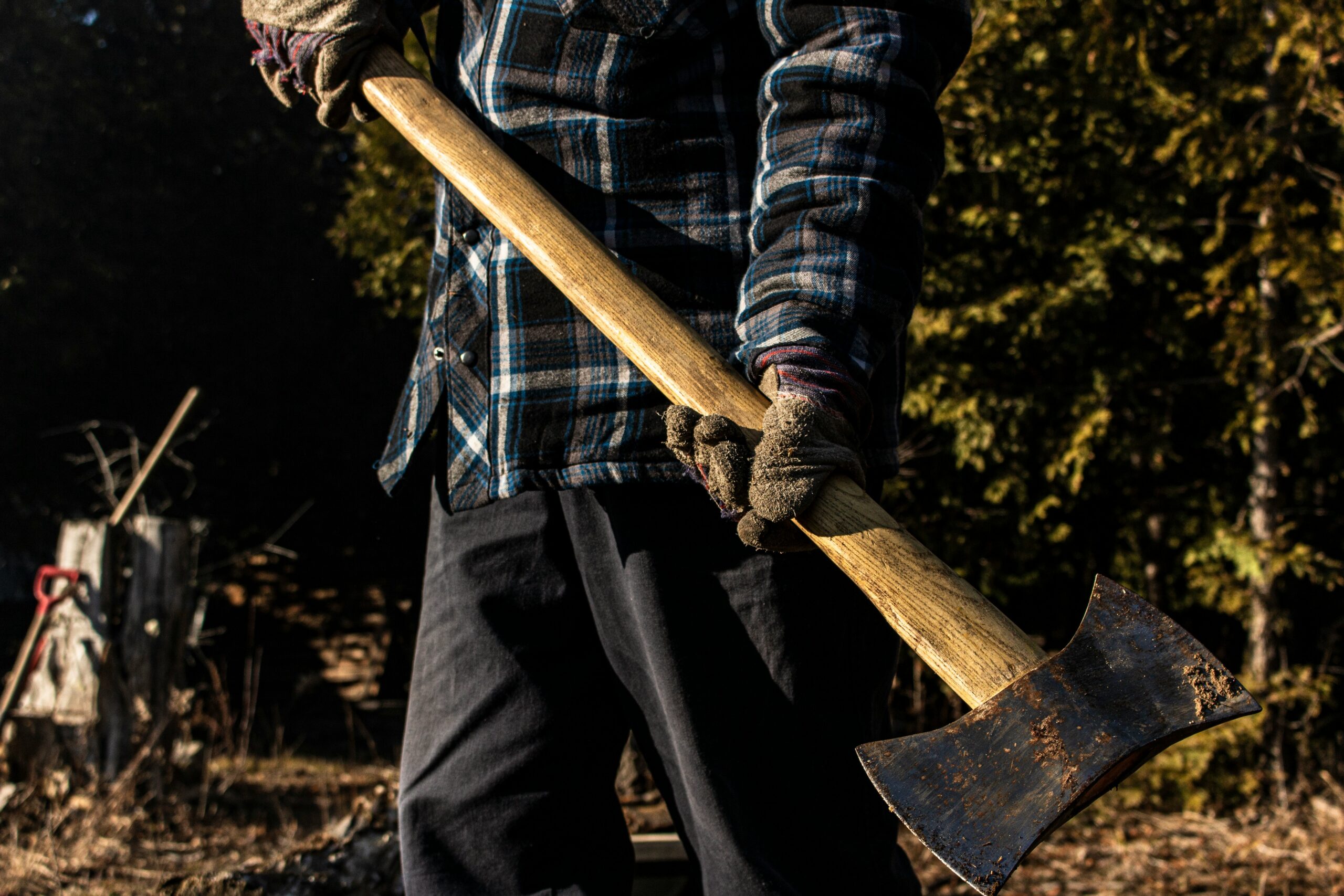Axe-throwing competitions can be thrilling, but they also have risks that must be managed. Many organizers worry about liability and ensuring the safety of their participants. This guide covers essential strategies to manage these risks effectively. Key points include implementing safety protocols and training staff and volunteers in risk management. By understanding these areas, organizers can protect their employees and participants, ensuring a safer environment while enhancing employee benefits and health insurance plans. This article will help address concerns about safety and liability in your target market for axe-throwing events.
Key Takeaways
- identify common safety hazards to prevent injuries during axe-throwing competitions
- obtain necessary permits and insurance to comply with legal requirements and protect organizers
- conduct mandatory safety briefings to educate participants on safe axe-handling practices
- provide skill-building opportunities to enhance participant safety and improve throwing techniques
- maintain accurate records and continuously review risk management strategies for ongoing safety improvements
Understanding the Risks Associated With Axe Throwing Competitions

Axe throwing competitions come with various risks that need careful management. Identifying common safety hazards and recognizing legal and insurance implications is essential. Assessing participant skill levels helps ensure safety while addressing venue-specific challenges that can prevent accidents. Each area plays a role in enhancing safety and enjoyment in axe-throwing events.
Identifying Common Safety Hazards
Identifying common safety hazards is critical in axe-throwing competitions. Statistics show that improper handling of the axe can lead to serious injuries, making it important to emphasize safety education and proper technique for all participants. Additionally, the venue’s property must be inspected for accessibility and structural integrity, ensuring that all throwers can use the space safely, which might also affect insurance underwriting practices and licensing requirements for the event.
Recognizing Legal and Insurance Implications
Understanding the legal and insurance implications of axe-throwing competitions is vital for organizers. Liability insurance is crucial to protect against claims related to injuries or property damage that may occur during the event. Additionally, organizers must comply with occupational safety and health regulations to ensure a secure environment, including having emergency plans to address any hazards that might arise.
Assessing Participant Skill Levels
Assessing participant skill levels is a key aspect of risk management in axe-throwing competitions. Different skill levels among throwers can affect safety and overall tournament enjoyment. Organizers can enhance safety by providing training sessions or experience evaluations to align skills with appropriate throwing challenges, ensuring regulatory compliance and minimizing the risk of accidents. This proactive approach can also positively impact the event’s profit by attracting more participants.
Addressing Venue-Specific Challenges
Addressing venue-specific challenges is vital for the safety and success of axe-throwing competitions. Each venue may have unique features, such as walls and layouts, that require thorough risk assessments to comply with local regulations. Organizers must also focus on customer service by ensuring that participants understand the environment and any specific safety measures needed to mitigate risks. This helps meet the growing demand for safe and enjoyable axe-throwing experiences.
Implementing Effective Safety Protocols

Implementing effective safety protocols is crucial for managing risk in axe-throwing competitions. This includes establishing clear rules and guidelines, conducting mandatory safety briefings, ensuring proper equipment maintenance, and designing safe throwing lanes and barriers. Each step helps prevent injury and addresses potential hazards, supporting a safer environment for participants while meeting general liability and disability requirements.
Establishing Clear Rules and Guidelines
Establishing clear rules and guidelines is crucial for the safety and enjoyment of axe-throwing competitions. This knowledge helps organizers create an environment that prioritizes participant safety while enhancing the event’s entertainment value. For instance, rules regarding the transport of axes, including proper handling and storage, can be an important asset in preventing accidents, especially in light of the challenges posed by the pandemic. The clarity in these regulations allows throwers to engage confidently and enjoyably.
Conducting Mandatory Safety Briefings
Conducting mandatory safety briefings is essential to manage risks effectively in axe-throwing competitions. These briefings help participants understand the risk factors associated with axe-throwing activities and how to handle axes properly to avoid negligence. Moreover, having a clear policy in place during these briefings can align with property insurance requirements, thereby protecting the income of the event organizers while ensuring a safe environment for all participants.
Ensuring Proper Equipment Maintenance
Ensuring proper equipment maintenance is key to managing risk during axe-throwing competitions. Regular inspections of axes, from the handles to the blades, help prevent accidents that could result in injury. An effective marketing strategy for ax throwing venues should also emphasize safety, highlighting the importance of maintaining equipment to comply with law and insurance policy requirements, thereby reassuring participants about their safety and enhancing their overall experience.
Designing Safe Throwing Lanes and Barriers
Designing safe throwing lanes and barriers is crucial in reducing the risk of accidents during axe throwing competitions. These designated areas should be spacious enough to accommodate throwers of varying skill levels, ensuring that participants have enough room to throw safely without the stress of hitting someone else. In addition, barriers should be sturdy and high enough to contain stray axes, preventing any potential safety failures that could lead to injury and enhancing the overall understanding of safety practices among participants.
- Identify skill levels among participants.
- Ensure spacious throwing lanes.
- Implement sturdy barriers.
- Educate participants on safety practices.
Training Staff and Volunteers in Risk Management

Training staff and volunteers in risk management are essential for ensuring safe and enjoyable axe-throwing competitions. Developing comprehensive training programs prepares them to handle various situations while clearly assigning roles and responsibilities and sets expectations for each team member. Additionally, preparing for emergency situations equips staff to react appropriately during incidents, and promoting a safety-first culture encourages a commitment to best practices among all participants. These measures help protect customers by minimizing risks and fulfilling waiver and disclaimer requirements.
Developing Comprehensive Training Programs
Developing comprehensive training programs for staff and volunteers is essential in axe-throwing competitions. These programs should focus on key aspects like the correct use of axe-throwing lanes, the importance of proper rotation during throws, and how to effectively engage with the target audience. By ensuring that team members are well-prepared and knowledgeable, organizers can enhance overall event safety and boost revenue, creating a more enjoyable experience for everyone involved in this global sport.
Assigning Roles and Responsibilities
Assigning clear roles and responsibilities is a key factor in managing risk during axe throwing competitions. Each staff member should know their specific duties, whether it’s overseeing safety protocols, maintaining equipment, or enhancing the customer experience. This structure not only minimizes expenses related to training but also ensures that all aspects of safety are covered, helping a limited liability company meet legal and insurance requirements effectively.
Preparing for Emergency Situations
Preparing for emergency situations is vital in ensuring safety during axe throwing competitions. Staff and volunteers should undergo specific training to handle scenarios like personal injury or accidents involving axes. If a participant gets injured while aiming for the bullseye, having trained personnel can help minimize the risk of a lawsuit by providing immediate assistance and following proper protocols to ensure everyone’s safety.
Promoting a Safety-First Culture
Promoting a safety-first culture within an organization is essential for effective risk management during axe throwing competitions. This culture encourages both contractors and volunteers to prioritize safety, leading to better practices and a more enjoyable event for participants. By fostering open communication about safety concerns and implementing regular training workshops, organizations can ensure everyone involved understands the importance of maintaining a safe environment for all.
Engaging Participants in Safety Practices

Engaging participants in safety practices is vital for a successful axe throwing competition. This includes communicating expectations clearly, encouraging the use of protective gear, and monitoring participant behavior. Additionally, providing skill-building opportunities helps everyone improve their techniques and safety awareness. These strategies foster a culture of safety, ensuring a fun and secure environment for all involved.
Communicating Expectations Clearly
Communicating expectations clearly is essential for participant safety in axe throwing competitions. Organizers should outline all safety protocols and rules before the event to ensure everyone understands their roles and responsibilities. By providing concise guidelines and reminders about safe axe handling and throwing techniques, organizers can reduce the likelihood of accidents and create a more enjoyable experience for all participants:
Encouraging the Use of Protective Gear
Encouraging the use of protective gear is crucial in axe throwing competitions to enhance participant safety. Wearing items like helmets, padded clothing, and gloves can significantly reduce the risk of injury. Organizers should provide participants with information on the benefits of protective gear and perhaps include it as part of the recommended equipment list for the event:
Monitoring Participant Behavior
Monitoring participant behavior during axe throwing competitions is essential to ensure a safe environment for everyone involved. Staff members should actively observe throwers to identify any risky actions or unsafe throwing techniques. For instance, if someone is not following safety protocols, staff can intervene promptly, guiding them toward safer practices and preventing potential accidents.
Providing Skill-Building Opportunities
Providing skill-building opportunities is essential for participants in axe throwing competitions. Organizers can offer workshops focusing on throwing techniques and safety practices, allowing participants to improve their skills before the competition begins. These changes not only boost confidence among throwers but also create a safer environment by reducing the likelihood of accidents caused by improper technique:
Navigating Legal Requirements and Compliance

Navigating legal requirements and compliance is essential for axe throwing competitions. This section will cover understanding local regulations and codes to ensure safety, acquiring necessary permits and licenses to operate legally, and implementing effective waivers and consent forms to protect both organizers and participants. Maintaining accurate records and documentation is crucial for compliance and risk management.
Understanding Local Regulations and Codes
Understanding local regulations and codes is essential for organizers of axe throwing competitions. Each area may have specific rules governing safety, event permits, and venue usage. Familiarizing oneself with these requirements not only helps ensure compliance but also enhances participants’ safety and minimizes the risk of legal issues arising from accidents or injuries during events:
Acquiring Necessary Permits and Licenses
Acquiring necessary permits and licenses is a critical step for anyone organizing axe throwing competitions. Local governments often require specific permits to ensure compliance with safety standards and venue regulations. By obtaining these permits, organizers minimize legal risks and create a safer environment for participants, which can enhance the overall enjoyment of the event.
Implementing Effective Waivers and Consent Forms
Implementing effective waivers and consent forms is essential for managing risk in axe throwing competitions. These documents help protect organizers from liability by informing participants about potential risks and obtaining their agreement to participate willingly. It is important for organizers to ensure that these waivers are clear and comprehensive, outlining the rules of the event and the inherent risks involved in axe throwing:
- Clearly state the inherent risks of axe throwing.
- Obtain participant acknowledgment of safety rules.
- Include emergency contact information for participants.
Maintaining Accurate Records and Documentation
Maintaining accurate records and documentation is crucial for managing risk in axe throwing competitions. Organizers need to keep detailed logs of participant waivers, safety briefings, and incident reports to demonstrate compliance with legal requirements. By having well-organized documentation, event organizers can efficiently address any potential legal issues and show that they have followed safety protocols during competitions:
Continuously Reviewing and Improving Risk Management Strategies

Continuously reviewing and improving risk management strategies is vital for safe axe throwing competitions. Gathering feedback from participants helps identify areas for improvement. Analyzing incident reports and data reveals underlying patterns that can enhance safety protocols. Updating procedures based on best practices ensures a proactive approach, while investing in ongoing staff development fosters a knowledgeable team committed to maintaining safety.
Gathering Feedback From Events
Gathering event feedback is an effective way to enhance safety strategies in axe throwing competitions. Organizers can collect insights from participants about their experiences, identifying areas that need adjustments or improvements. By actively seeking this information, event planners can make informed decisions that better address safety concerns, ultimately leading to a more secure environment for all involved.
Analyzing Incident Reports and Data
Analyzing incident reports and data is a crucial step in enhancing safety in axe-throwing competitions. Organizers should closely examine past incidents to identify trends or common factors that lead to accidents. By understanding these patterns, they can implement specific adjustments to risk management strategies, ensuring future events are safer for all participants.
Updating Procedures Based on Best Practices
Updating procedures based on best practices is essential for enhancing safety in axe throwing competitions. Organizers should regularly review and refine their risk management strategies by staying informed about industry standards and successful approaches from other venues. This commitment to continuous improvement helps prevent accidents and ensures a safer experience for participants, ultimately leading to greater enjoyment and confidence in the competitions.
Investing in Ongoing Staff Development
Investing in ongoing staff development is vital for enhancing safety in axe throwing competitions. Training programs focusing on risk management practices empower staff to recognize hazards and respond effectively during events. With well-trained personnel, organizers can create a safer environment, ultimately leading to a better experience for participants and increased confidence in the implemented safety measures.
Conclusion
Managing risk in axe throwing competitions is essential for ensuring participant safety and enjoyment. Organizers can create a secure environment that minimizes accidents by implementing comprehensive safety protocols, assessing skill levels, and maintaining clear communication. Understanding legal requirements and continuously improving strategies enhances overall event compliance and success. Emphasizing these practices protects participants and elevates the performance and reputation of axe-throwing events, making safety a top priority.

